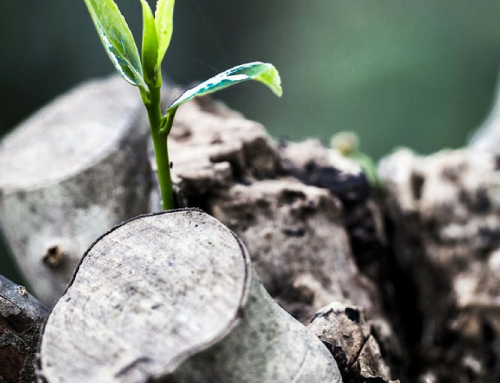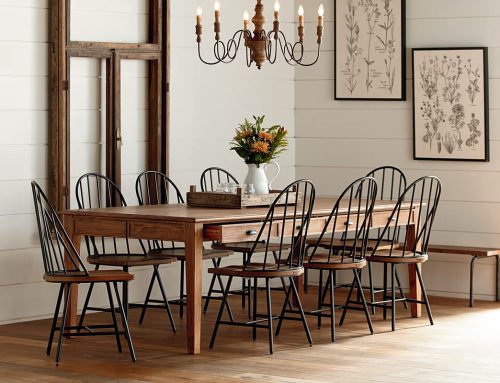This January, we’re helping you achieve your New Year’s goal of … de-cluttering! This isn’t a new topic for us. In fact, we have an extensive library of articles on clutter and going clutter-free that can also help you with this goal. But we wanted to centralize, organize and give you the easiest set of tools and resources possible to help you achieve your new de-cluttering goal. To that end, we’ve put together this easy ten-step plan to help you de-clutter. And you may be surprised how much of it doesn’t have you in work pants cleaning out a closet!
Step One: Identify What’s Causing You To Keep Clutter
Our first article in this series was about how to figure out what’s causing you to hold on to clutter – and chances are that it’s really not about time management or busy schedules (not to say those don’t play a role). The biggest things keeping you from de-cluttering are likely mental and emotional anchors. So, for step one, go back and read that article and then get yourself into a proper de-cluttering mindset.
Step Two: Identify Areas of Clutter
Everything that you do in life is easier if you break it down into smaller steps or smaller projects. That’s true of de-cluttering as well. If you think of your entire house as a clutter zone, it will be hard for you to get started. So break it down into areas. These areas can be as small as a drawer or as large as the entire garage. We recommend dividing things down into areas that are as small as possible though.
Step Three: Create an Order for Your Areas of Clutter
You’re definitely going to notice that a lot of our steps are about documenting or making lists. The more organized you are about your de-cluttering efforts, the less overwhelming it will be. So the next step is to take your list of all of the areas of clutter in your home (or your car, or your office) and rank them in the order that you want to get them done. Personally, we like using an Excel spreadsheet for this, but any list app or even a paper notebook will work. Of course, we certainly think that you should start with the smallest and easiest to manage area and work your way up.
Step Four: Decide if You Need Deadlines
This step is about making a personal decision. If you feel like, now that you have a list, you truly will work your way through all of your areas of clutter, then you are set. However, perhaps you’re a person who really, truly needs deadlines in order to be successful. If that’s you, then use your spreadsheet, list app or notebook to set a time goal or deadline for each area that you want to de-clutter. Be realistic though! If a space is very large, be sure to leave yourself enough time to actually get it done. And if life intervenes and you need to adjust a deadline, make sure that you adjust them all.
Step Five: Set Up Your Clearing Area
When you de-clutter, you’ll find that your “stuff” most likely falls into one of five groups: recycle, trash, donate, keep or store. What’s going to make your de-cluttering effort easiest is if you’ve already set up a staging area with a recycling bag, a trash bag, a box for donations and a box for things that you’ll later take to storage. Obviously, you want to see the majority of excess items going into one of the first three categories, but you’ll certainly have items in the latter two categories and you want to account for those, too.
Step Six: Take a Deep Breath
This step may sound silly at face value, but if you think back to the types of emotional and mental reasons that caused you to be a clutter-saver to begin with, you’ll see that you can’t underestimate the mental and emotional impact of de-cluttering. So honor that by taking a moment (or several) to inhale a deep breath and collect yourself. Of course, don’t take too long or those same emotions may freeze you in your tracks!
Step Seven: It’s Time to De-Clutter!
Now you have to decide what to purge and what to keep. Our advice is to do this as quickly as possible so that emotions don’t get in the way. How do you identify? The easiest way is to use these three rules, but the fastest way to parse things down is to simply use the “When did I last use (or even look at) this item?” rule. If the answer is more than a year, it goes. Of course there will be exceptions, but the fastest and most basic way to purge an item is to determine if it actually has any use to you.
Step Eight: Get Your Purged Items Out Quickly
This is when things can get a little bit tricky! You’ve swallowed the pill, so to speak, on making a choice to purge, but you haven’t actually taken the action item of getting rid of the stuff you want to let go of. That means that there’s plenty of opportunity for you to change your mind, back out or otherwise just hold onto your stuff but in a different location. Trash and recycling need to go now! And so do donations. Do not let those items sit around your house, because the longer they do, the greater the chance that they are never actually leaving.
Step Nine: Now, Reorganize.
Now that you’ve got the stuff that’s going out of the way, it’s time to re-organize your space. Remember, you want to re-organize so that everything you want to see or use is easy to get to and has a pre-determined space. The biggest hurdle you’ll find yourself having to get over here is that you’ll have an automatic instinct to want to fill up “empty spaces.” Don’t worry! With time that will go away … and we even have some tips below to help you stay uncluttered.
Step Ten: Work Your Way Through Your List
Now it’s time to attack that list of places of clutter in your home! If you’ve set deadlines, the process probably will be much easier. But either way, the last step is to simply complete the project that you started. We think you’ll find that as you go along and start enjoying a clutter-free home, you’ll find the emotional and mental anchors are less heavy.
And, of course, we promised you tips on how to stay clutter-free after a stuff purge, so here they are!
Did we miss a step in how to de-clutter that you want to share with us? If so, just tell us about it on one of the social media channels below.
Facebook | Twitter | Instagram | Tumblr | Pinterest | Google+





